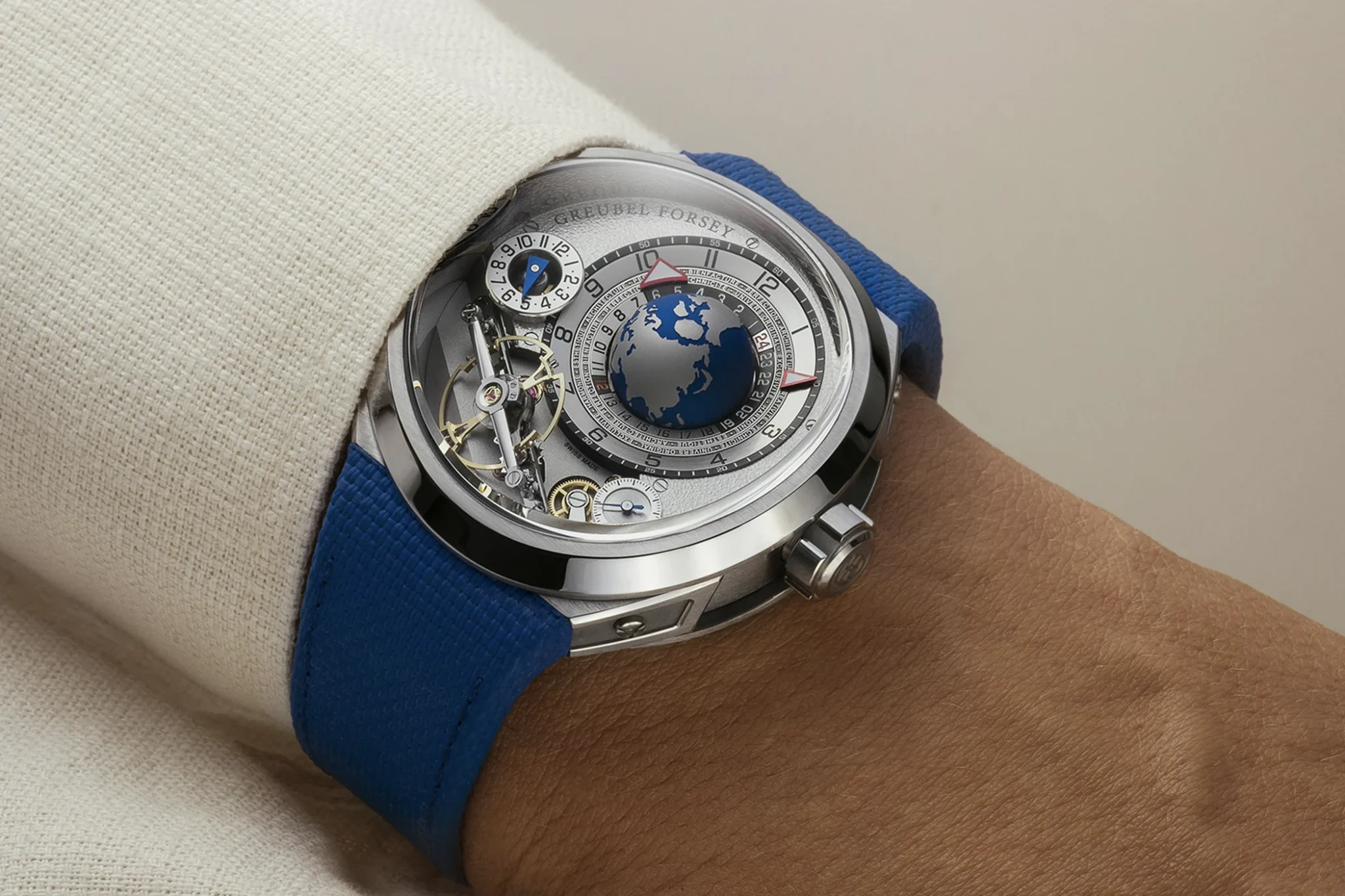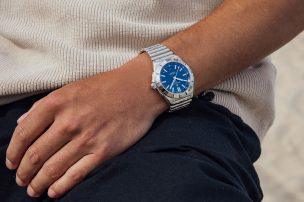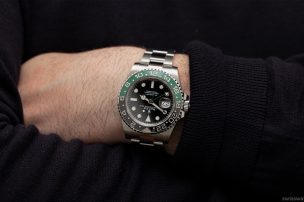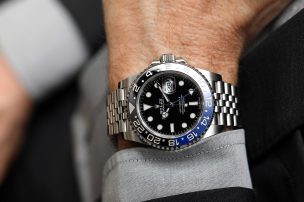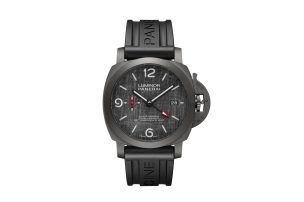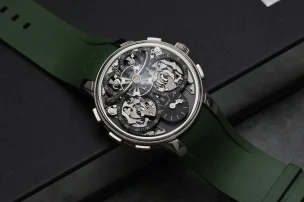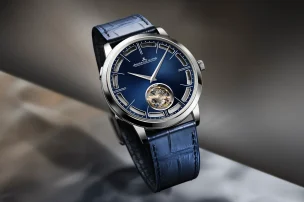
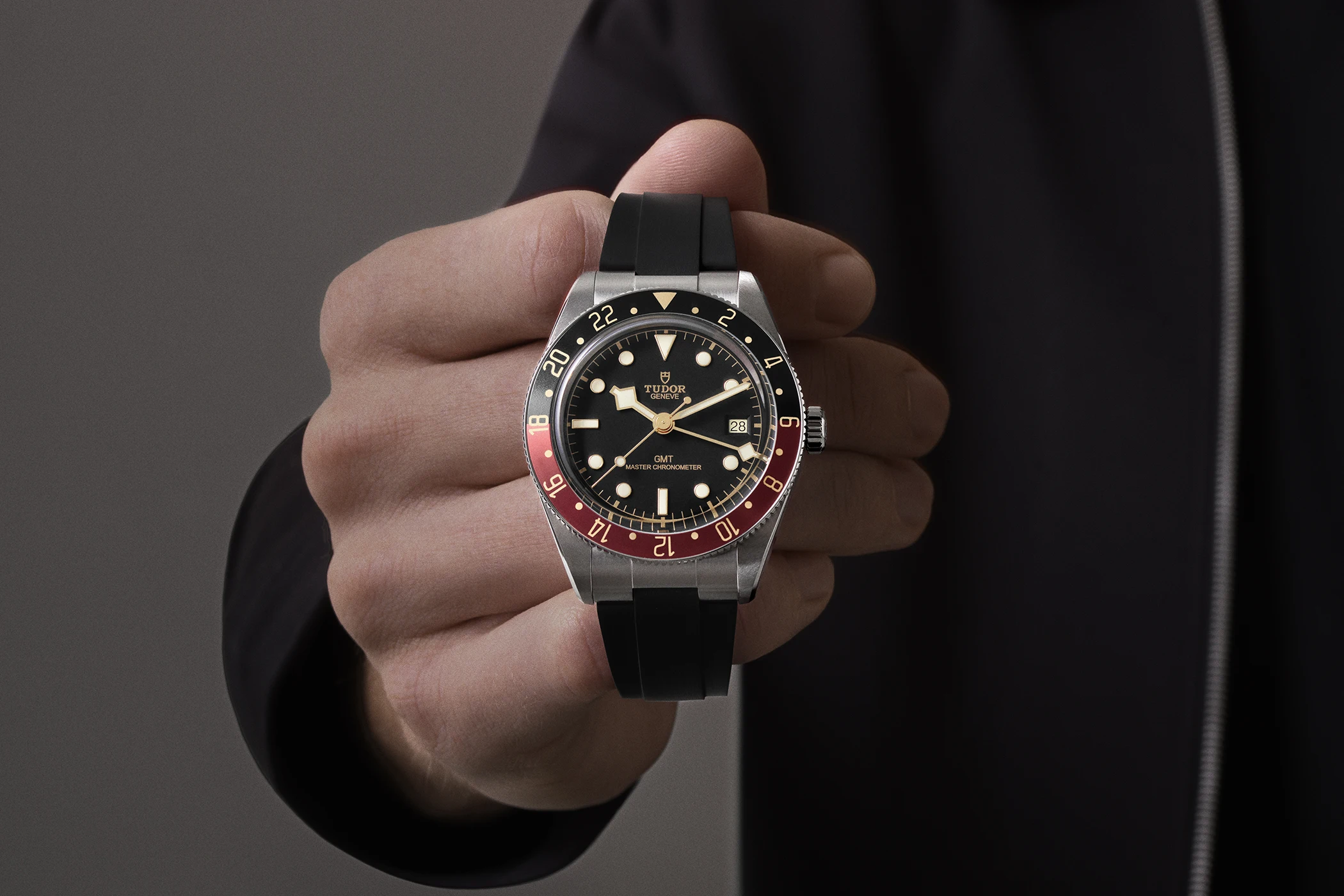
The Best GMT Watches for Every Budget: A Guide for Beginners and Collectors
The perfect choice for frequent flyers, businesspeople, and globetrotters: GMT watches typically allow you to keep track of up to two additional time zones alongside the local time. Practical and versatile, they are ideal for those who frequently interact with or travel across different time zones. In this article, we present our selection of the best GMT watches for every budget – a comprehensive guide for beginners and collectors.
What types of GMT watches are there, and how do they differ from one another?
To get to the heart of the question of what the difference is between the most common types of second-generation GMT watches, let’s take a closer look at Breitling’s Chronomat and the Rolex GMT-Master II. At first glance, both differ little in their function; however, one is an ‘office’ GMT watch, while the other is a ‘traveller’ GMT watch. The difference only becomes apparent when you take a look behind the dial and at the movement construction, as the two watches differ in how their hands can be adjusted.
The ‘Office’ GMT Watch
The ‘office’ GMT watch allows for the independent adjustment of the GMT hand. The regular hands, which are responsible for showing the local time, remain unaffected in this crown position. In the next crown position, where the regular hands are adjusted, the GMT hand moves as well. To set a second time zone, you simply need to align the GMT hand with the 24-hour scale on the bezel or rehaut. These watches are, therefore, more suited for people living in a fixed time zone but who frequently need to work with or communicate across other time zones.
The ‘Traveller’ GMT Watch
By contrast, the ‘traveller’ GMT has the advantage that the regular hour hand can be adjusted independently of the GMT hand, without needing to stop or reset the watch. This makes it ideal for travellers who want to keep track of their home time with the GMT hand, while easily adjusting their local time. This is why watches with this function are generally referred to as ‘traveller’ GMT watches. If you’re keen to learn more about setting “Office” and “Traveller” GMT watches, this guide will suit you perfectly.
GMT watches guide under €2,000
Mido Ocean Star GMT – €1,440
With the Mido Ocean Star GMT, the brand enhanced its diver’s watch collection with a 200-metre water-resistant version featuring the GMT function. The 40.5 mm watch showcases a deep blue dial and matching bezel, in line with the brand’s goal to modernise its portfolio with contemporary dials and more colourful designs. The watch is a traveller GMT, meaning the reference time must be set first in the third crown position. The 24-hour GMT hand and the hour hand rotate together, with both hands aligned to the home time. When you travel, the second crown position must be used to adjust the hour hand independently from the 24-hour hand to the new local time. The Mido Ocean Star GMT is powered by the GMT 80.661 movement, based on the ETA C07.661, and offers a power reserve of up to 80 hours. Nickel-plated bridges, a rotor with Geneva stripes, and an engraved Mido logo complete the movement. The Mido Ocean Star GMT is available for €1,440.
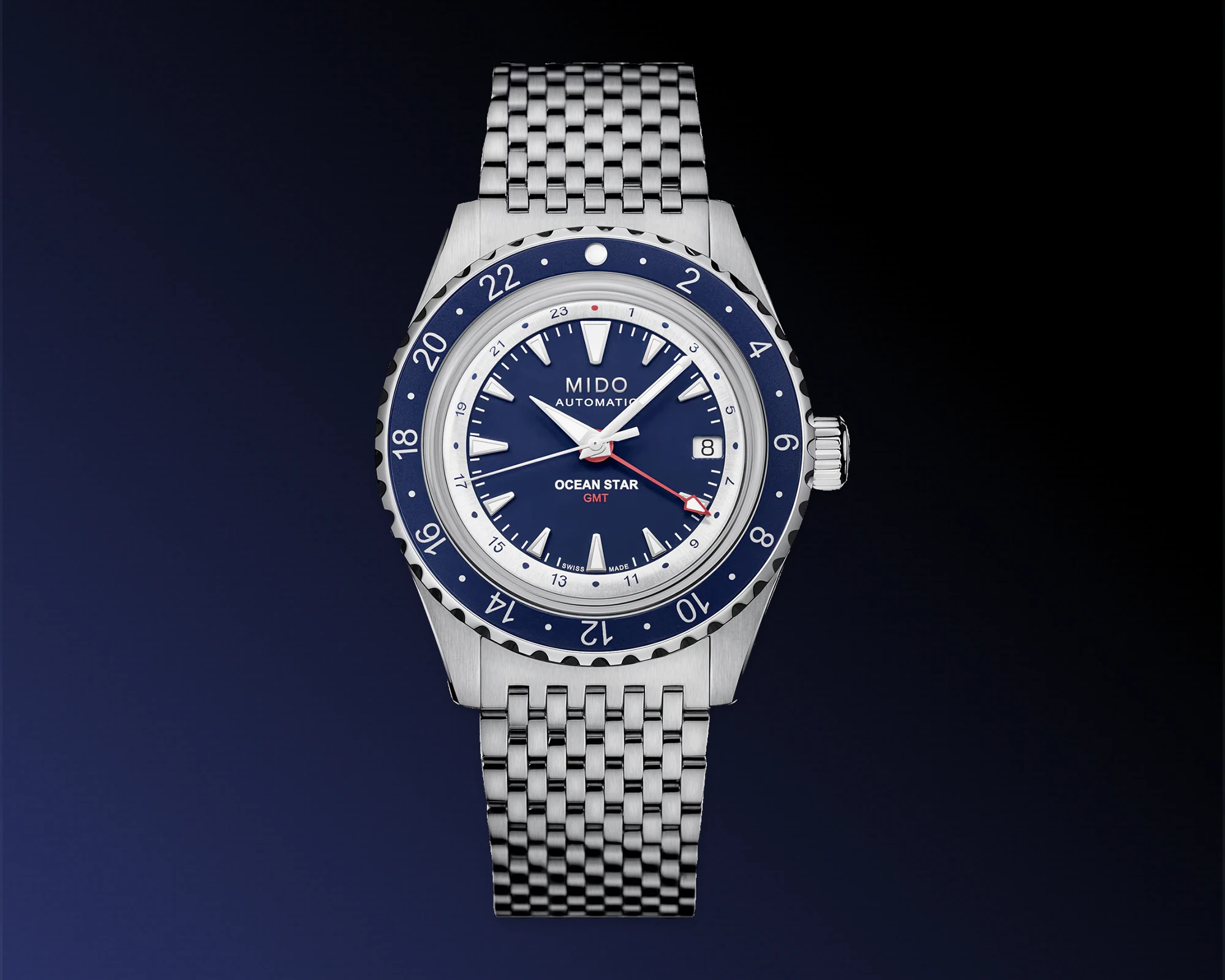
Union Glashütte Belisar Zeitzone – €1,950
With the Belisar Zeitzone watch, Union Glashütte presents a GMT timepiece with vintage style, with its green dial and beige Arabic numerals reminiscent of the ‘trench watches’ worn by soldiers under their trench coats. The olive-green dial features a warm gradient, transitioning from light green in the centre to deeper, darker tones toward the edge. This aesthetic is accentuated by the red tip of the 24-hour hand. The open caseback of the 41 mm case reveals the mechanical automatic calibre U2893-2, which is finished, assembled, and regulated in Glashütte and has a power reserve of 42 hours. As one of the few members of the Swatch Group that incorporates handcraft into every movement, components such as the Union winding rotor are stamped and finished in-house, and gears are polished in the manufacture. A brown goatskin strap with contrast stitching and a double-fold clasp completes the vintage look of the watch. For €1,950, you get German watchmaking craftsmanship with a rich history at a pretty fair price.
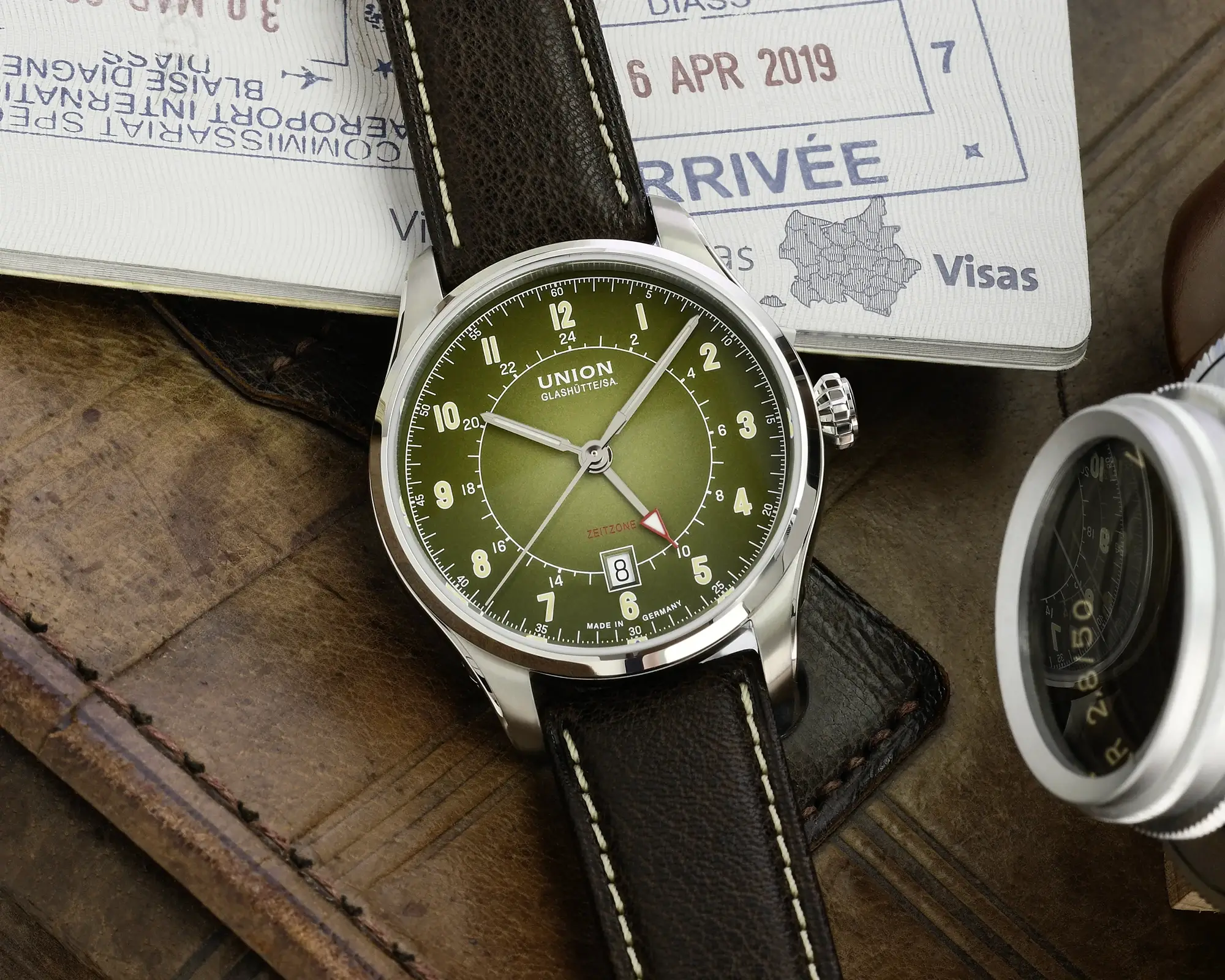
GMT watches guide between €2,000 and €5,000
Oris Aquis GMT Date – from €2,700
Over the course of its history, Oris has undergone a significant evolution: at the end of the 1960s, Oris was one of the ten largest watchmakers in the world, but faced a tough decade in the 1970s – the workforce shrank from 900 to just a few dozen, and they gave up their independence to become part of the Allgemeine Schweizerische Uhrenindustrie AG (ASUAG), the predecessor of the later Swatch Group – at least until CEO Rolf Portmann and marketing head Ulrich W. bought out the remaining company and decided to focus on mechanical watches, abandoning quartz technology – and thus, independence was restored.
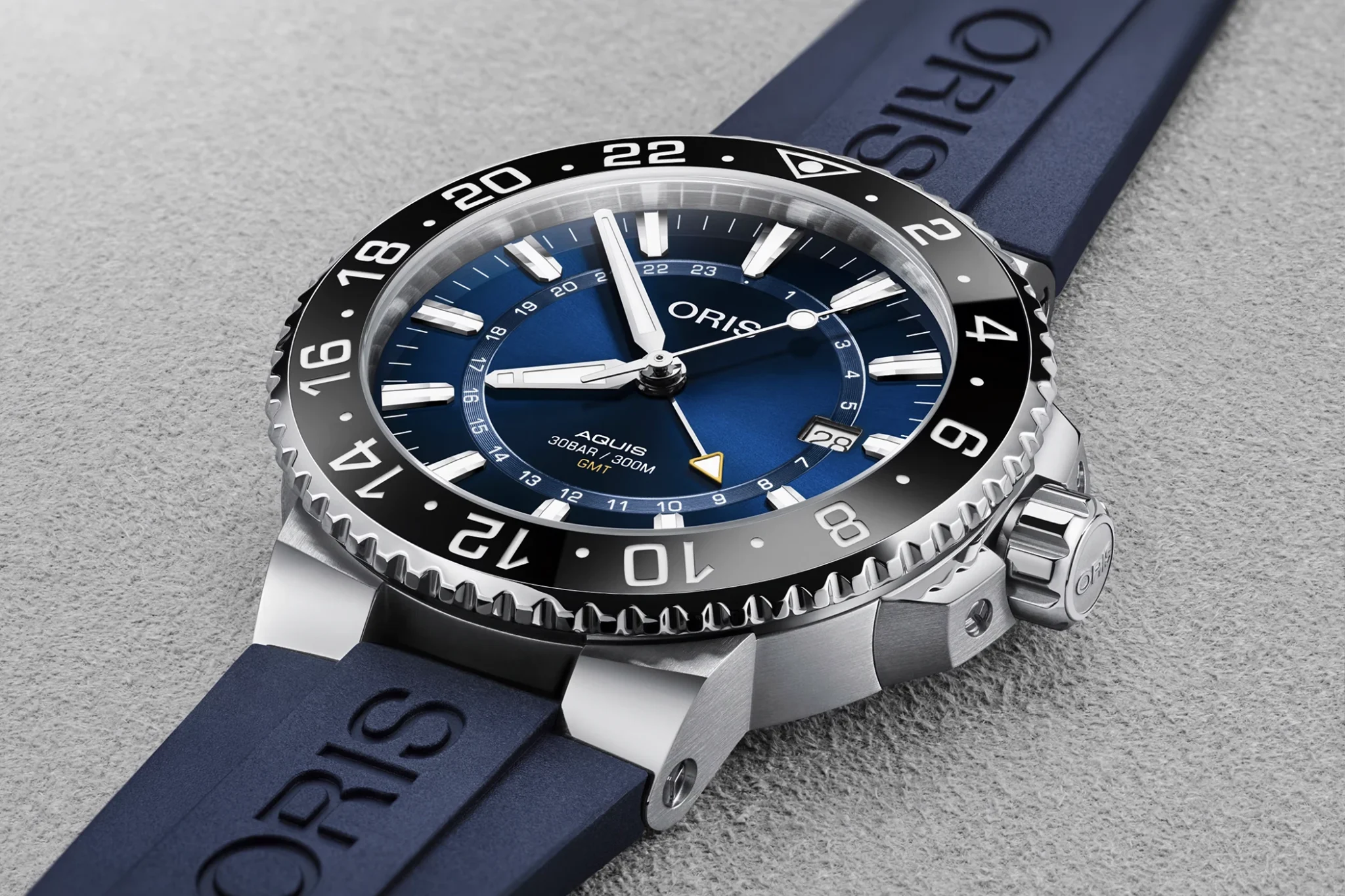
The Aquis collection, which currently comprises 72 models, is an integral part of the brand’s business model, alongside lines such as the Divers, Big Crown, and ProPilot. As an extension of the Aquis collection, Oris introduced the Aquis GMT Date, a 300-metre water-resistant watch that combines a date display with the GMT function, housed in a 43.5 mm case. This is an ‘office’ GMT watch that allows for independent adjustment of the GMT hand, which features a yellow tip. The dial is particularly legible, with a 24-hour scale combined with the bezel’s scale, making it easy to read three time zones. Inside the watch ticks the Calibre 798, based on the Sellita SW330-1, with a power reserve of 42 hours. With the Oris Aquis GMT Date, you receive a high-quality Swiss watch that offers practical everyday functions and is available for a reasonable price of €2,700.00 with a rubber strap or €2,950.00 with a stainless steel bracelet.
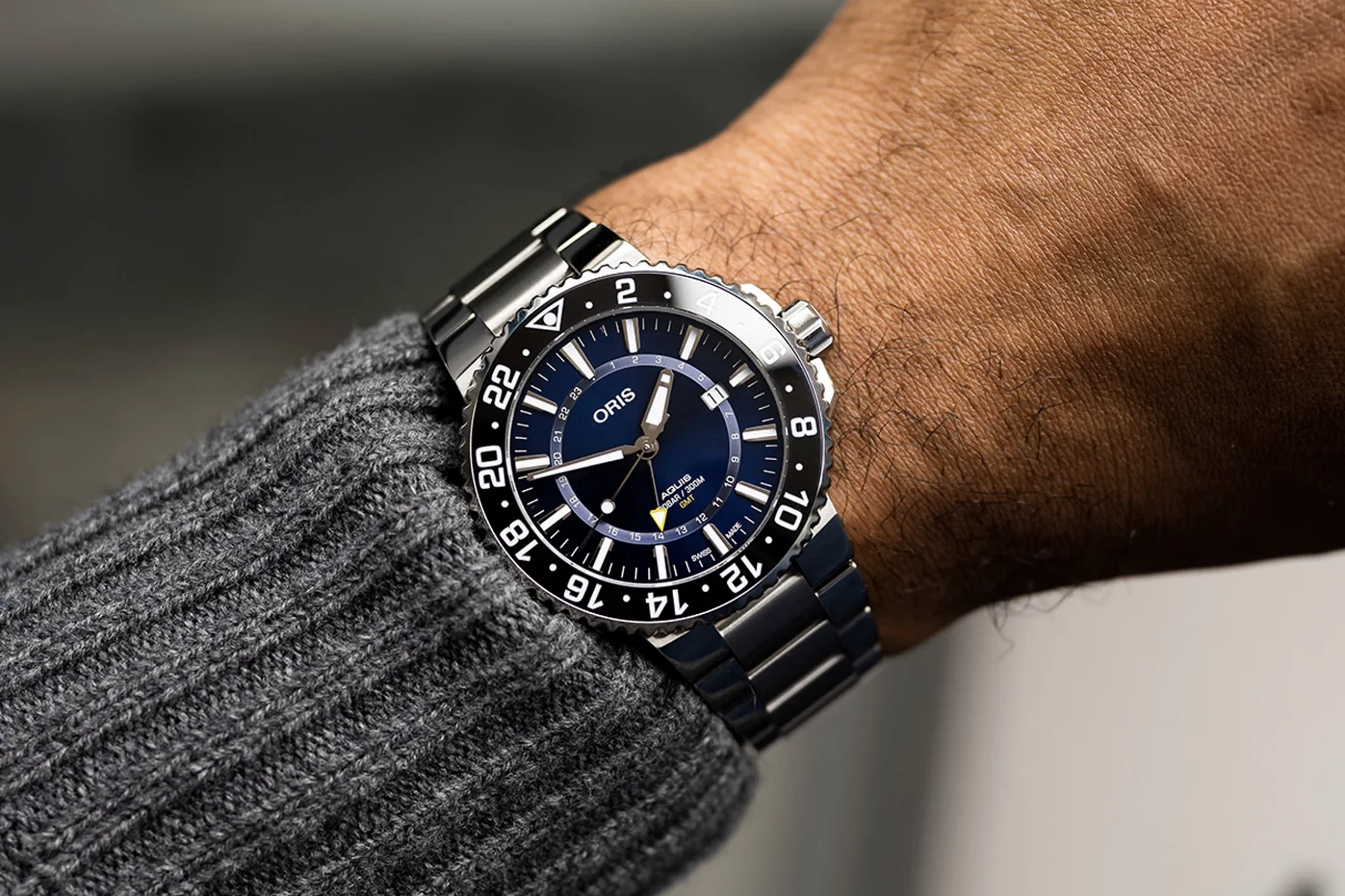
Longines Spirit Zulu Time – from €3,350
With its Zulu Time collection, Longines borrowed a term from the military, which has a long history within the brand. ‘Zulu Time’, also known as UTC (Coordinated Universal Time), is a universal time zone without any deviations or daylight-saving time, used worldwide in aviation, maritime, and military communication as the reference time. The origins of ‘Zulu Time’ within Longines date back to the 1920s, when a square Longines wristwatch first allowed for the conversion of Zulu Time to local time using two hour hands.
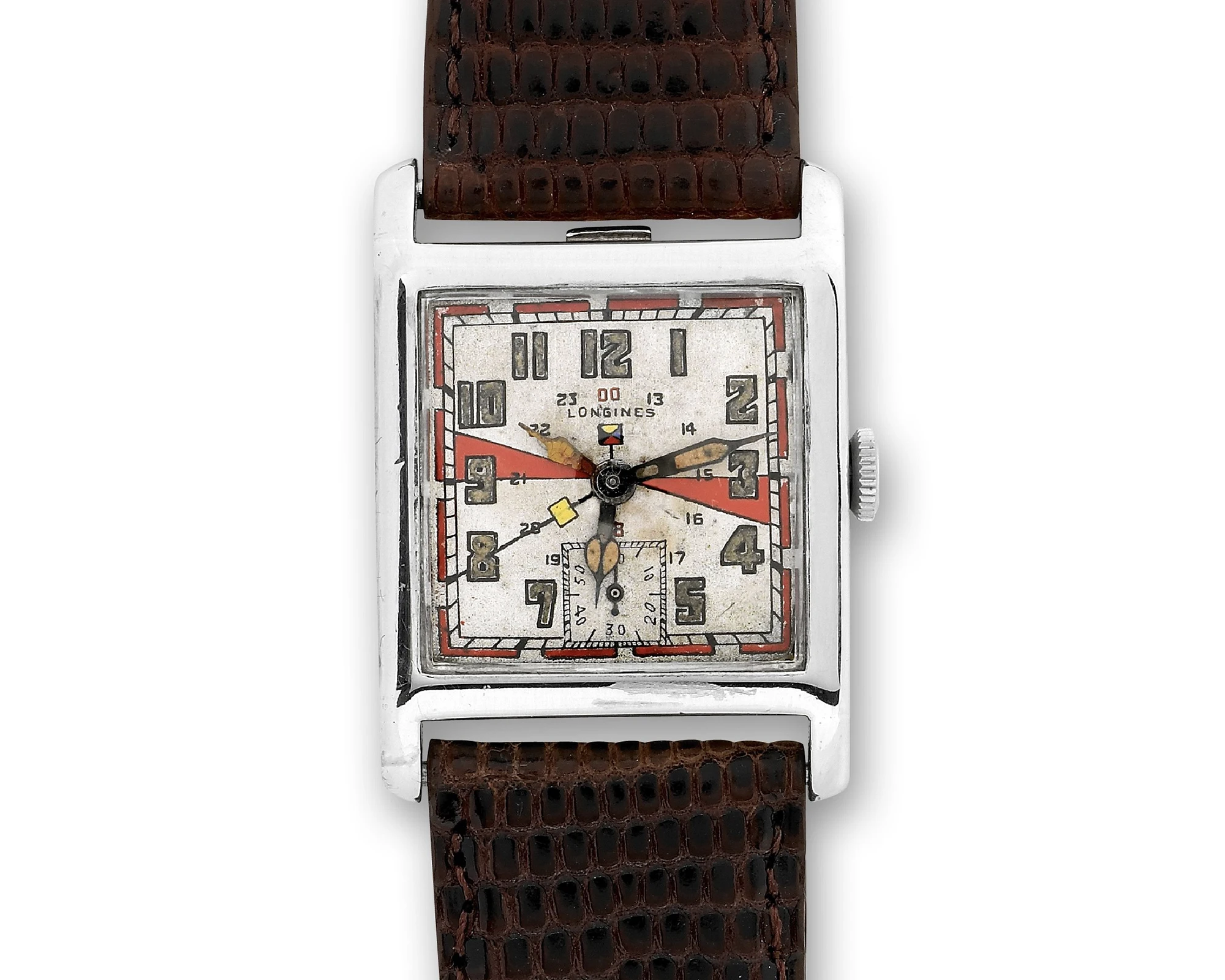
Credit © Antiquorum
However, the current version of the Spirit Zulu Time has little in common with the first version. The 39 mm or 42 mm case version is a ‘traveller’ GMT watch that allows for independent adjustment of the hour hand. Inside the watch ticks the automatic calibre L844.4, which offers a power reserve of around 72 hours. Interested buyers can acquire the watch in either case size for €3,350 on a leather strap or for €3,450 on a steel bracelet.
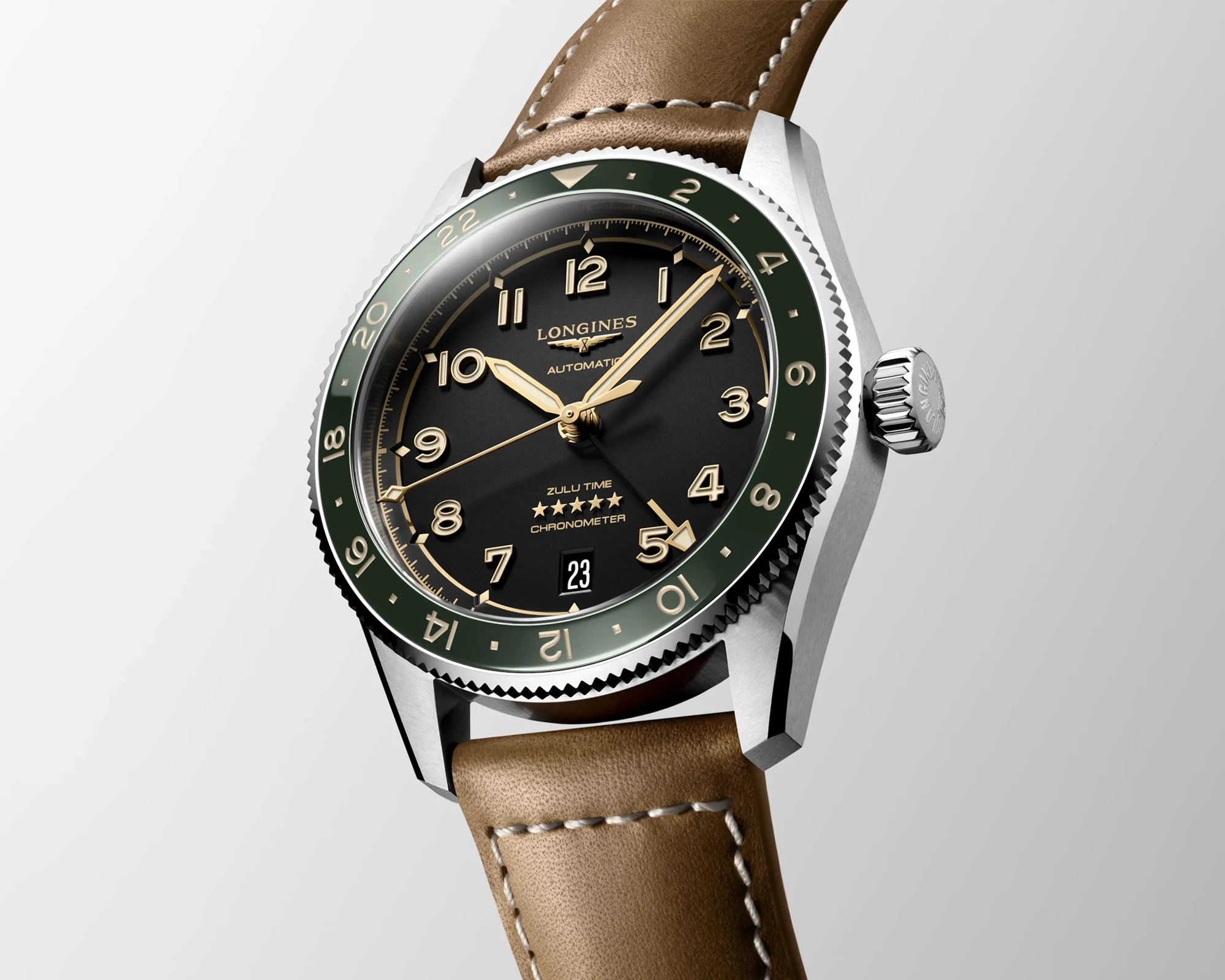
GMT watches guide: the meaning of ‘Zulu Time’
What exactly is meant by ‘Zulu Time’? Zulu Time is another term for Coordinated Universal Time (UTC), which is based on the concept of Greenwich Mean Time (GMT) and was created to facilitate the complex coordination of military and international operations across time zones. To better understand this concept, it is important to note that the Earth is divided into 24 time zones, each assigned a letter from the NATO alphabet. The general time zone through which the Prime Meridian (the reference point for UTC) passes is assigned the letter ‘Z’ or ‘Zulu’, which stands for zero meridian. Thus, Zulu Time, which lies directly on the Prime Meridian, indicates the current time without any time differences or daylight-saving time, allowing forces worldwide, especially in aviation, to work in sync. So, if an event is scheduled for 10:00Z (Zulu Time), it means: it takes place in Germany at 11:00 (CET, UTC+1), in the UAE at 14:00 (UTC+4), and in New York at 05:00 (UTC-5).
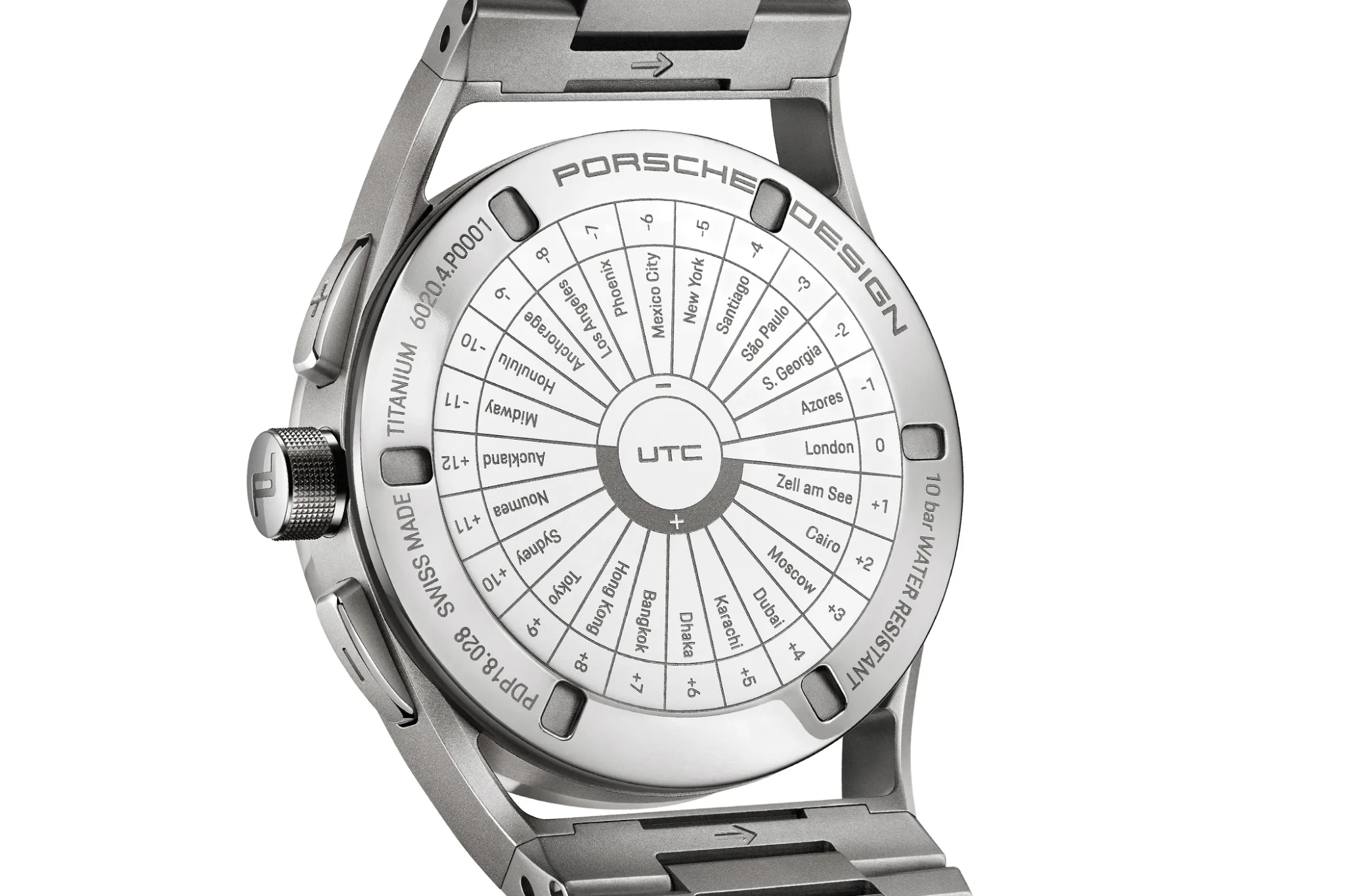
Bell & Ross: BR V2-93 GMT Blue – from €3,500
The Bell & Ross V2-93 GMT Blue incorporates a central feature of the GMT concept: the two-tone bezel that differentiates between day and night hours. The grey section marks the day hours, while the blue section indicates the night hours. The 41 mm stainless-steel case features the characteristic round shape of Bell & Ross’s Vintage series. The blue sunburst dial boasts hands, numerals, and indices coated with luminous material. Another detail is the counterweight of the seconds hand, designed as an aircraft. Equipped with the ‘Office’ GMT function, the watch is available with either a textile or steel bracelet for €3,500 and €3,800 respectively.
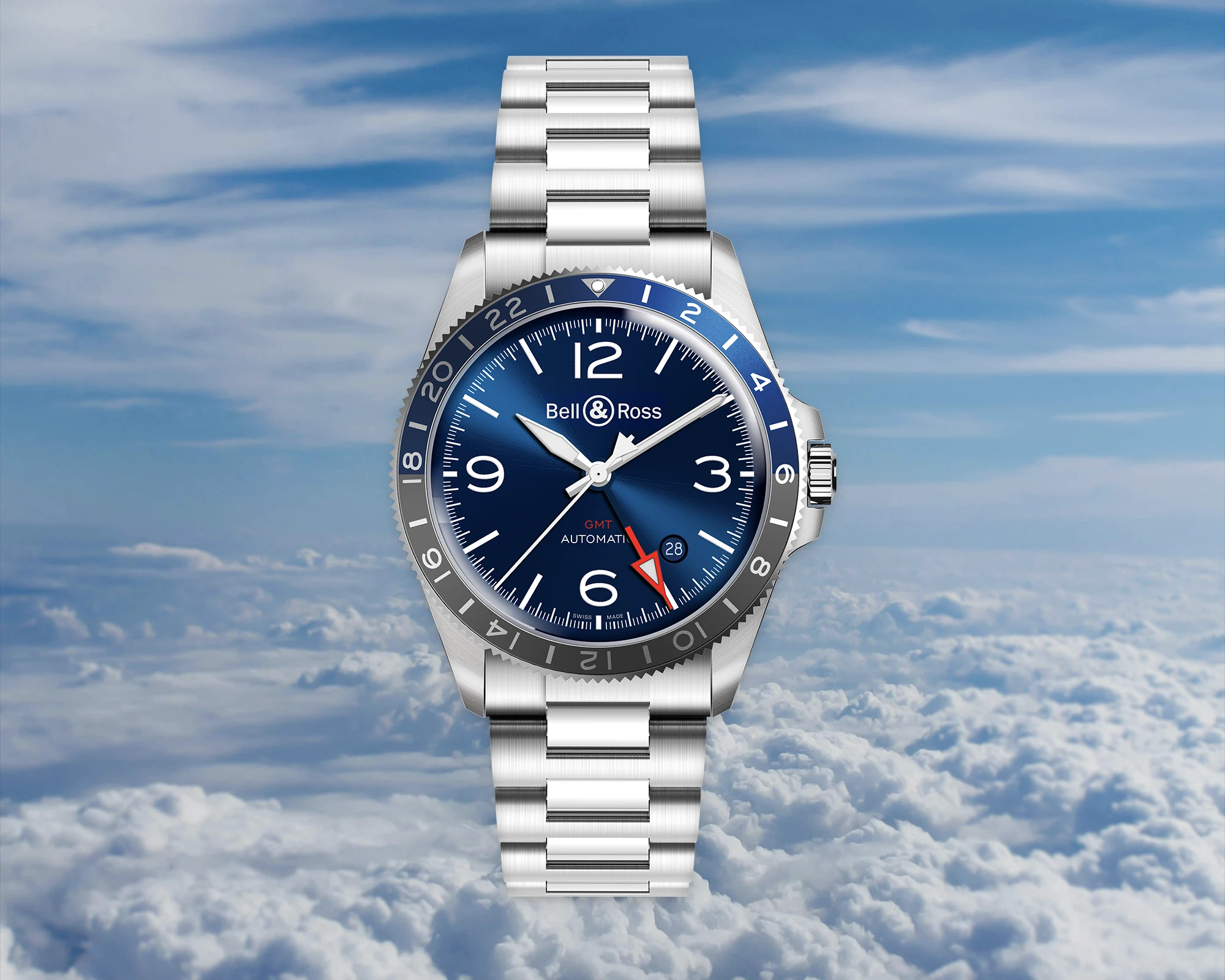
Norqain Neverest GMT – from €3,980
With the Neverest GMT, Norqain presents a similar concept, but with the two-tone ring placed not on the bezel, but on the inner rehaut that surrounds the dial. The watch features a black dial with a Norqain pattern framed by a 24-hour scale on the rehaut. The inner ring is two-tone: a blue half-ring marks the night hours from 18:00 to 6:00, while a white half-ring marks the daytime hours from 6:00 to 18:00. Another feature is the ‘Norqain Plate’ on the left side of the case, which can be engraved with a personalised message for an additional CHF 140. Norqain donates 10 percent of the proceeds from the sale of Neverest watches to the Butterfly Help Project in Nepal, supporting the families of Sherpas who have lost their lives in the Himalayas and providing their children with educational opportunities. The Norqain Neverest GMT with a stainless steel bracelet is available at a price starting at CHF 3,980.
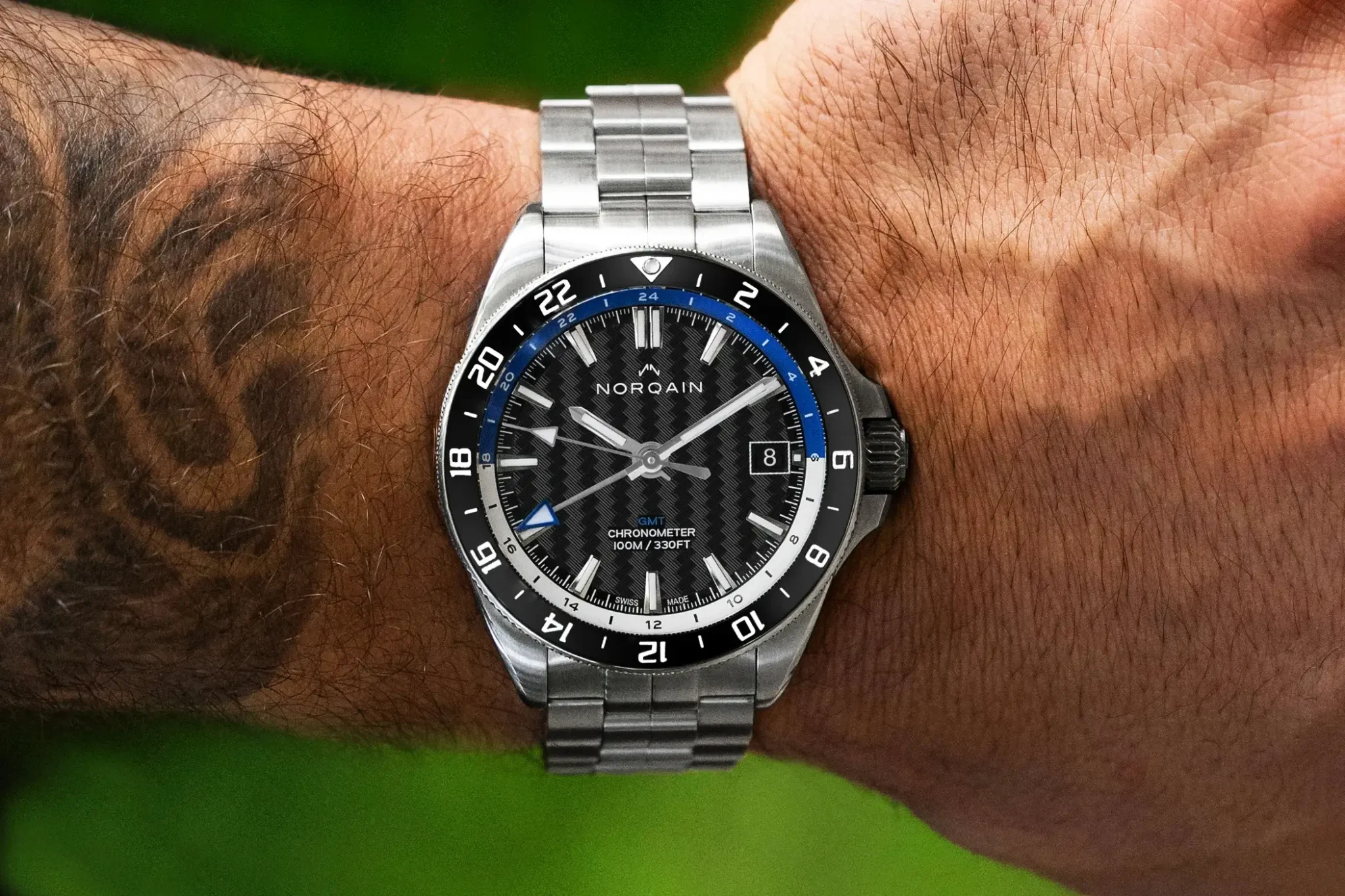
Bulgari Aluminium GMT – €4,100
The most striking feature of this Bulgari GMT watch is the bezel, where the brand name is displayed not once, but twice. This design, now most often associated with Bulgari alongside the Bvlgari Octo Finissimo and Serpenti collections, traces its roots back to the 1977 Bvlgari Bvlgari, the first men’s watch produced on an industrial scale. The first Bulgari Aluminium debuted in 1998, gaining attention with its unconventional combination of aluminium and rubber. The Bvlgari Aluminium GMT also features a 40 mm aluminium case and a black rubber bezel. It is a ‘Traveller’ GMT, with an independent hour hand that can be adjusted to the local time while keeping the home time on the GMT hand. The automatic B192 calibre inside offers a 42-hour power reserve. The Bulgari Aluminium GMT is priced at €4,100.
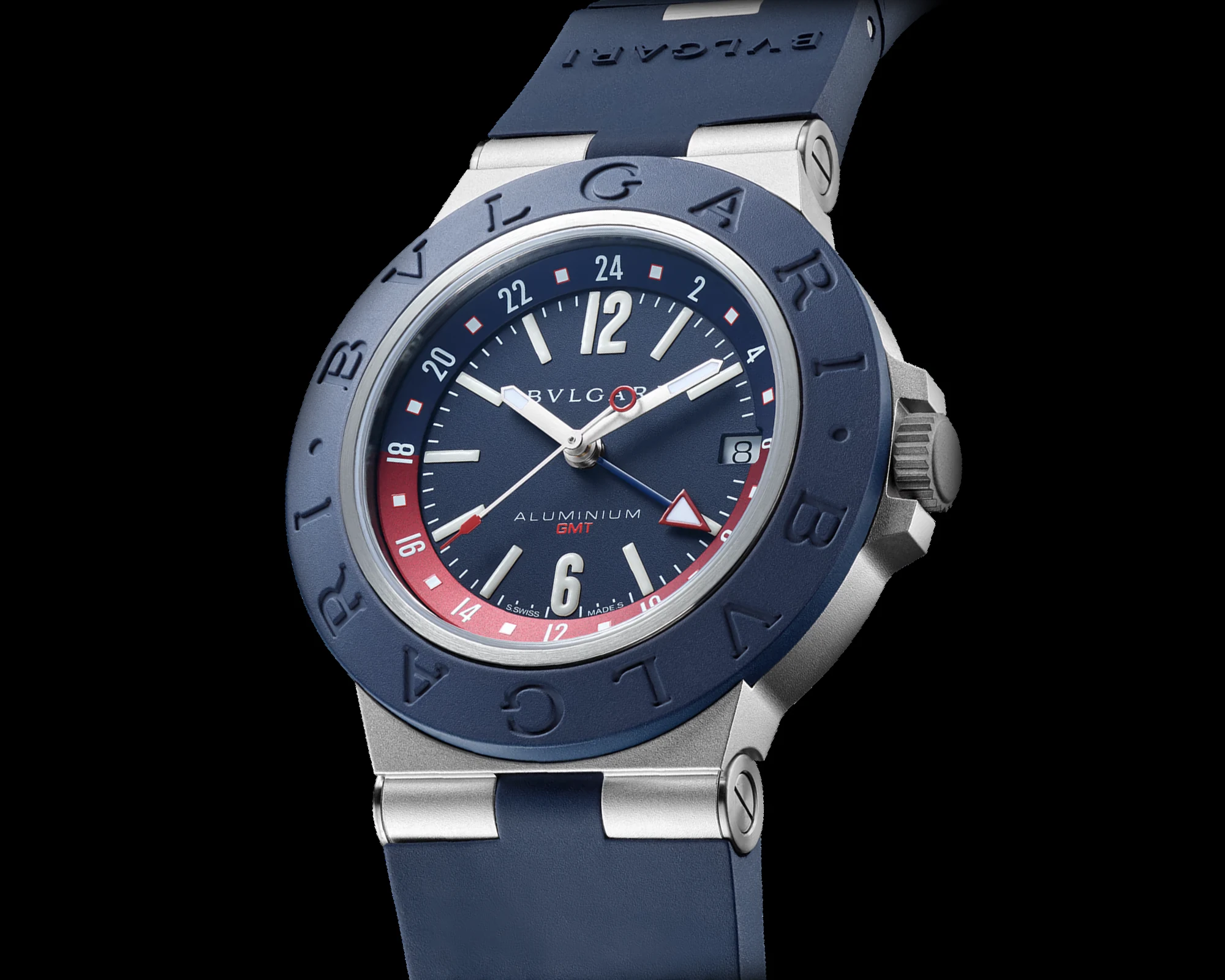
TAG Heuer Aquaracer Professional 300 GMT – €4,150
The TAG Heuer Aquaracer is available in two versions, with either a black-blue or black-green bezel inlay. Both models feature a sunray-brushed wave pattern dial in either blue or green, with the GMT hand in a contrasting lighter hue. The case of both versions is 42 mm in diameter and has a water resistance of 300 metres. Powered by the COSC-certified Calibre TH31-03, it offers a power reserve of 80 hours. The TAG Heuer Aquaracer Professional 300 GMT is an ‘Office’ GMT, allowing independent adjustment of the GMT hand. Both variants are priced at €4,150.
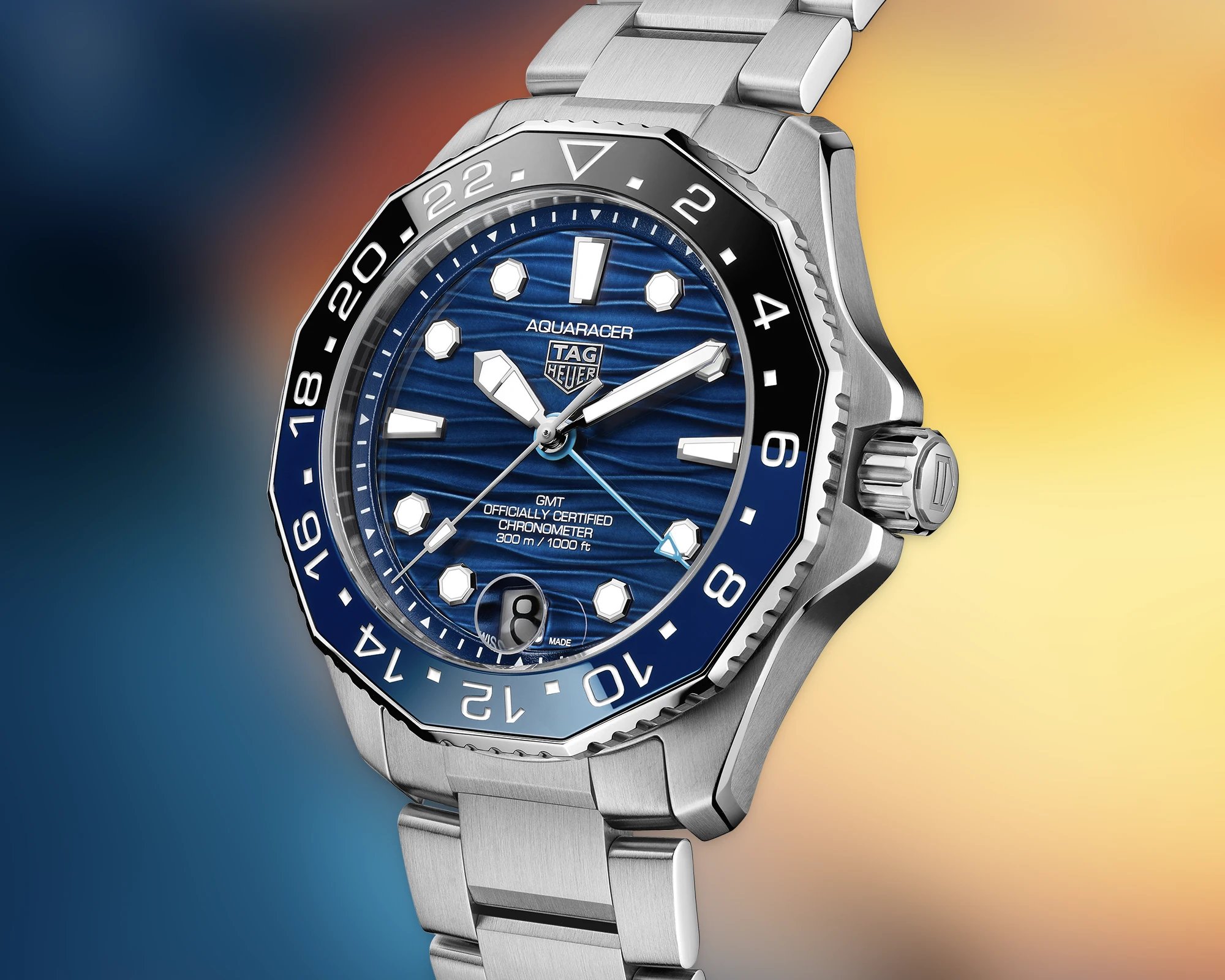
Tudor Black Bay 58 GMT – from €4,380
What enthusiasts of Rolex hoped for but didn’t get this year was delivered with great success by its ‘little sister’ Tudor. The Tudor Black Bay 58 GMT presents a black-red bezel, affectionately referred to as the ‘Coke’ bezel by watch connoisseurs. This watch features a 39 mm steel case, a black dial with gold hands, and offers a level of quality that closely matches its larger sister brand, Rolex. The automatic MT5450-U calibre inside provides a 65-hour power reserve. The Tudor Black Bay 58 GMT is a ‘Traveller’ GMT and is available with either a rubber strap or steel bracelet for €4,380 or €4,590 respectively. Our GMT watch guide continues with GMT watches priced under €10,000.
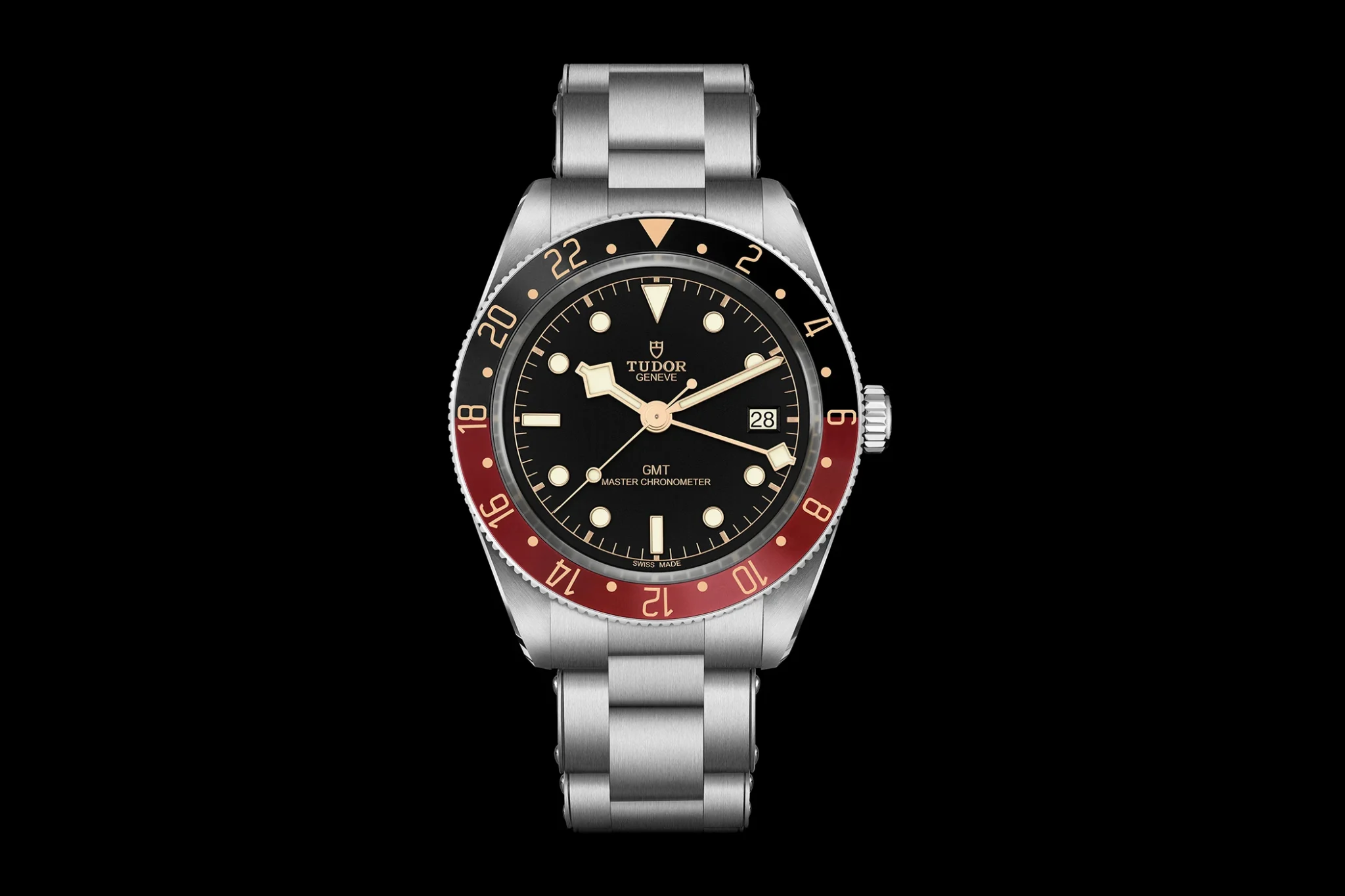
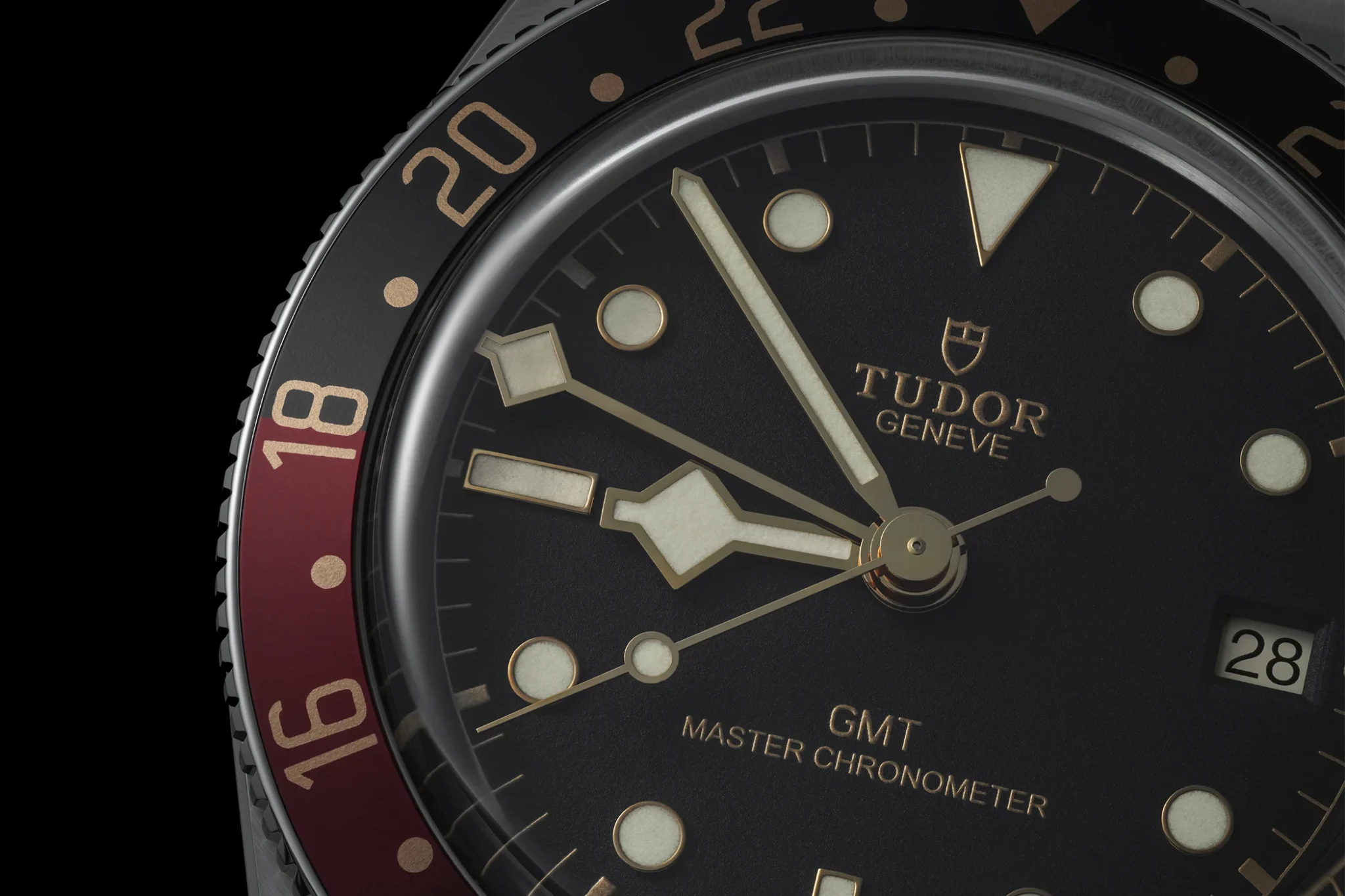
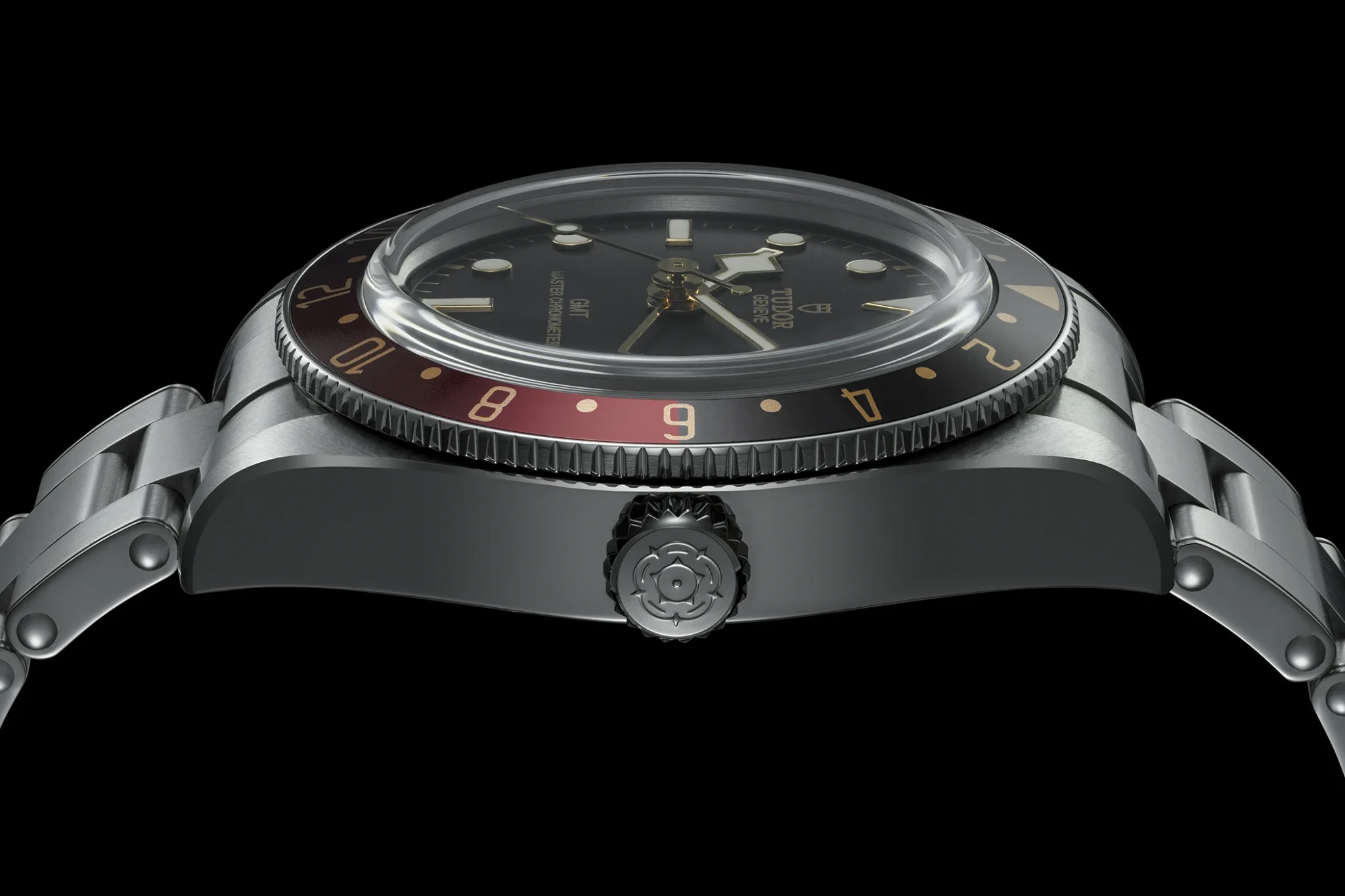
GMT watches guide under €10,000
Porsche Design 1919 Globetimer UTC – from €5,950
In 2019, Porsche Design introduced the 1919 Globetimer UTC, a watch with a second time zone that combines simplicity with technical sophistication. Using five hands, the watch presents multiple time-related pieces of information clearly and easily. The mechanism is particularly useful when changing local time, such as when travelling to a different time zone. With a simple press of the + or – button on the case, the local time hour hand adjusts one hour forward or backward without interrupting the running time. The date hand is linked to the local time and adjusts automatically. The 24-hour hand, which indicates the second time zone, can be adjusted in the usual manner by unscrewing and pulling out the crown. A small disc at 9 o’clock changes from white to black to show whether it’s day or night in the second time zone.
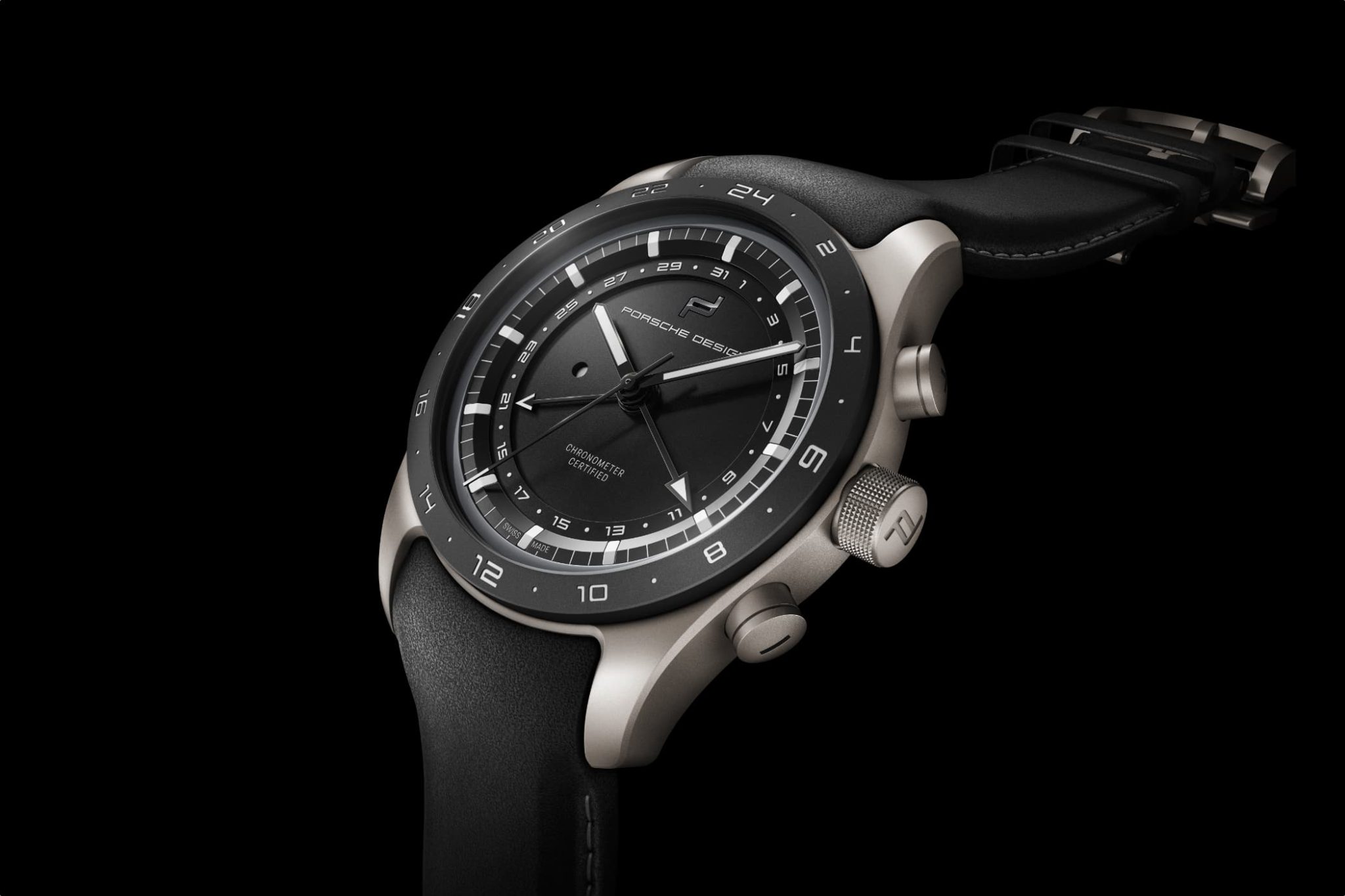
Inside the watch, the WERK 04.110 movement, developed specifically for the Globetimer, operates at a frequency of 28,800 vibrations per hour and offers a 38-hour power reserve. Thanks to its COSC certification, it is a certified chronometer. The price for the Porsche Design 1919 Globetimer UTC starts at €5,950, with the final price depending on the individual configuration chosen through their online watch configurator. The watch can be customised to your preferences, reflecting your personal taste or even matching the colours of your Porsche. The configurator allows for choices in the bezel ring (with 142 original Porsche colours), case, bezel, rotor, and even leather straps with contrast stitching in colours from Porsche’s sports cars.
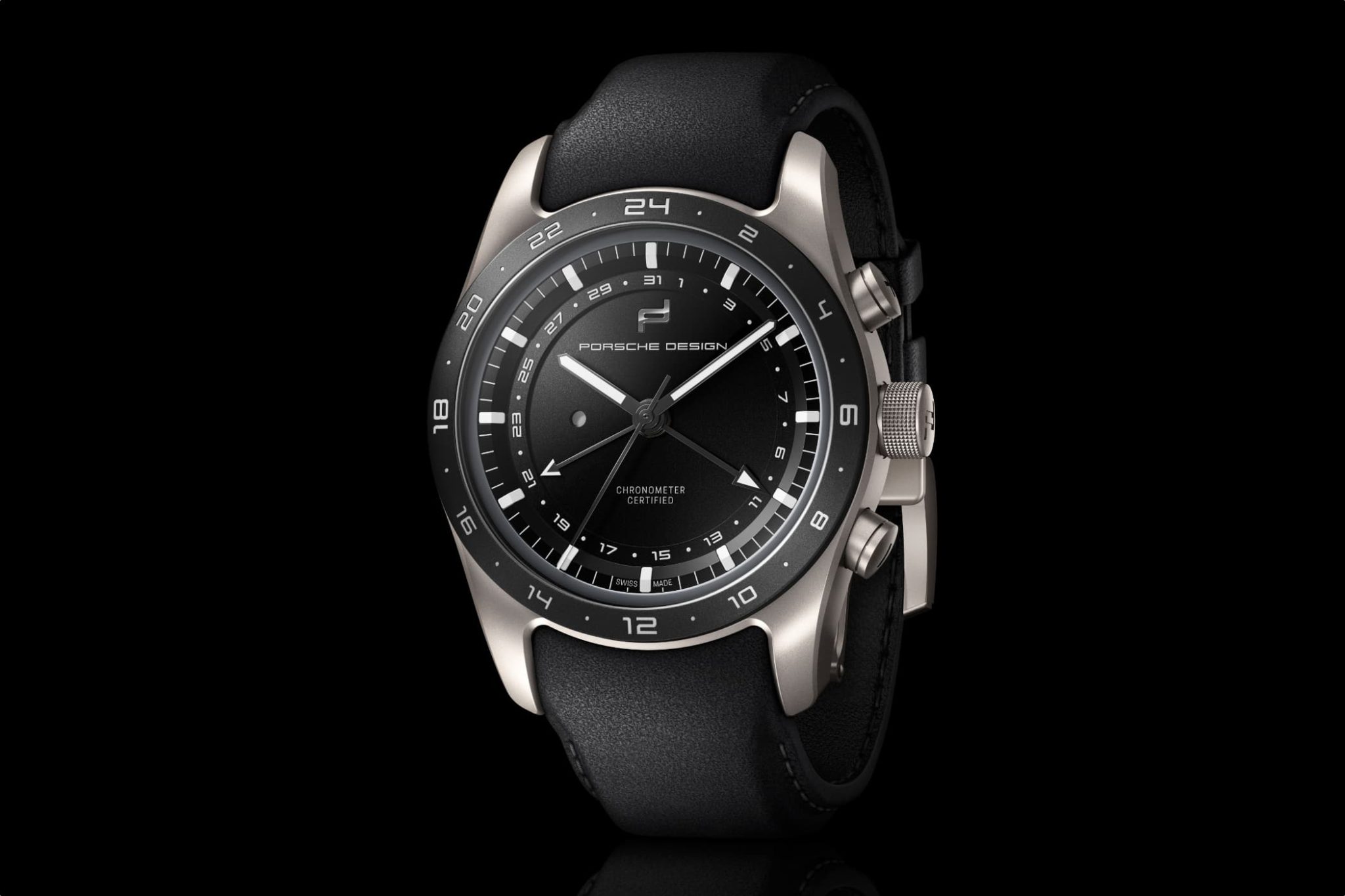
Breitling Chronomat Automatic GMT 40 – €5,950
Breitling has undergone a notable transformation in recent years under new leadership, and with clever marketing and compelling products, the brand has positioned itself as a highly desirable watchmaker. A key part of this transformation was the reintroduction of the Chronomat collection in 2020, followed by the release of the Breitling Chronomat Automatic GMT 40 in 2022. The Chronomat GMT collection includes five dial variations – white, anthracite, dark blue, grey, and green – all accentuated by the distinctive red GMT hand. The bezel is unidirectional and features a 60-minute scale rather than the usual 24-hour scale, with the GMT time displayed on the rehaut (inner bezel). Inside the 40 mm case, the Calibre 32 movement provides the ‘Office’ GMT functionality, allowing independent adjustment of the GMT hand. The Breitling Chronomat Automatic GMT 40 is priced at €5,950.
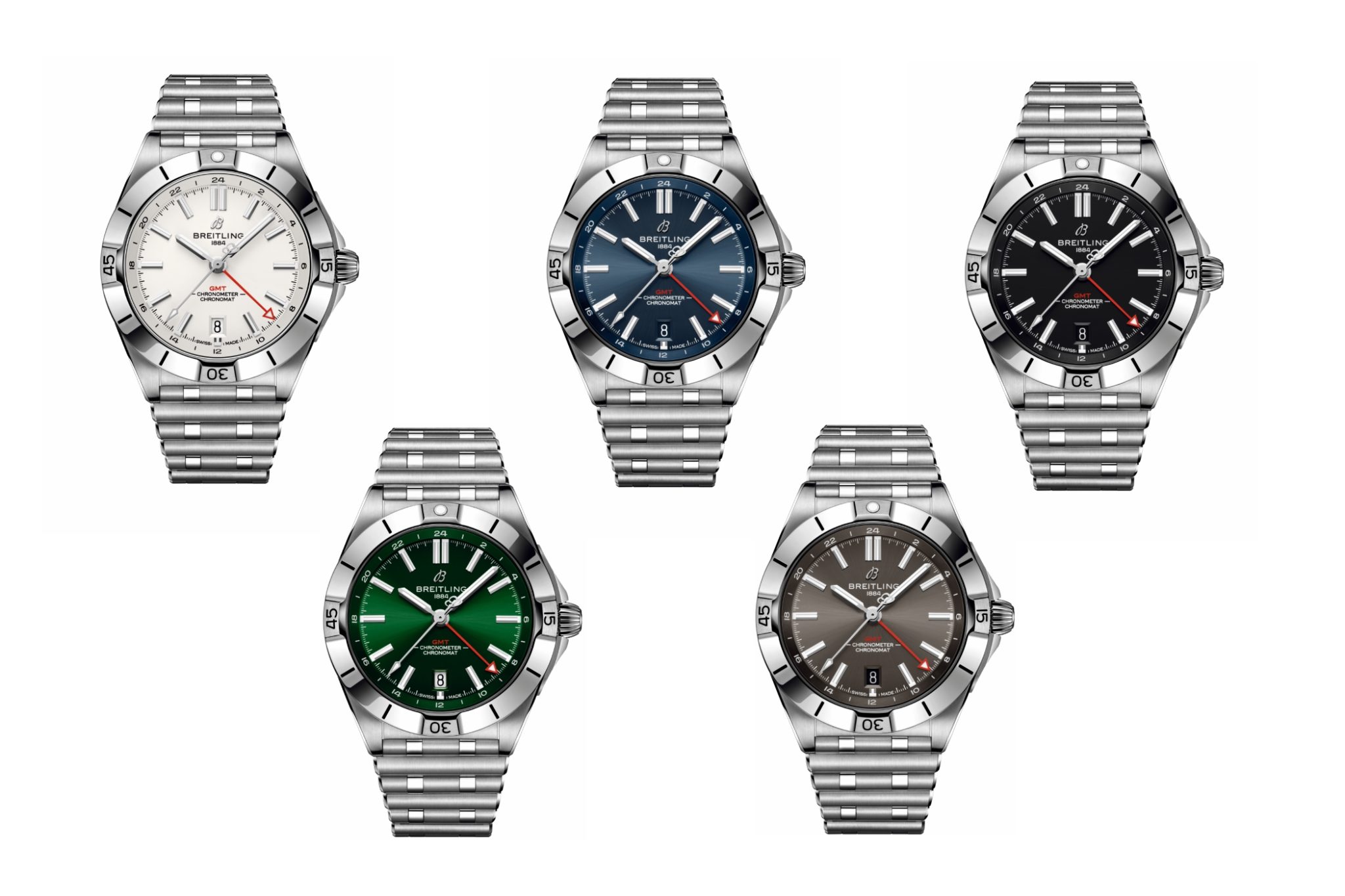
Omega Seamaster Planet Ocean 600M GMT – from €9,100
The Omega Planet Ocean 600M GMT is essentially a Planet Ocean dive watch, part of the collection since 2005, but with an added ‘Traveller’ GMT function. The GMT version stands out for its monochromatic appearance, with a black ceramic dial, bi-directional rotating bezel (which quickly distinguishes day from night), and contrasting white and grey markers. The watch has a 43.5 mm case and features Omega’s Master Chronometer Calibre 8906, providing a 60-hour power reserve. With a water resistance of 600 meters (60 bar) and a helium escape valve, it is suitable for professional diving. The watch is available in two variations: with an alligator leather strap for €9,100 or with a steel bracelet for €9,500.
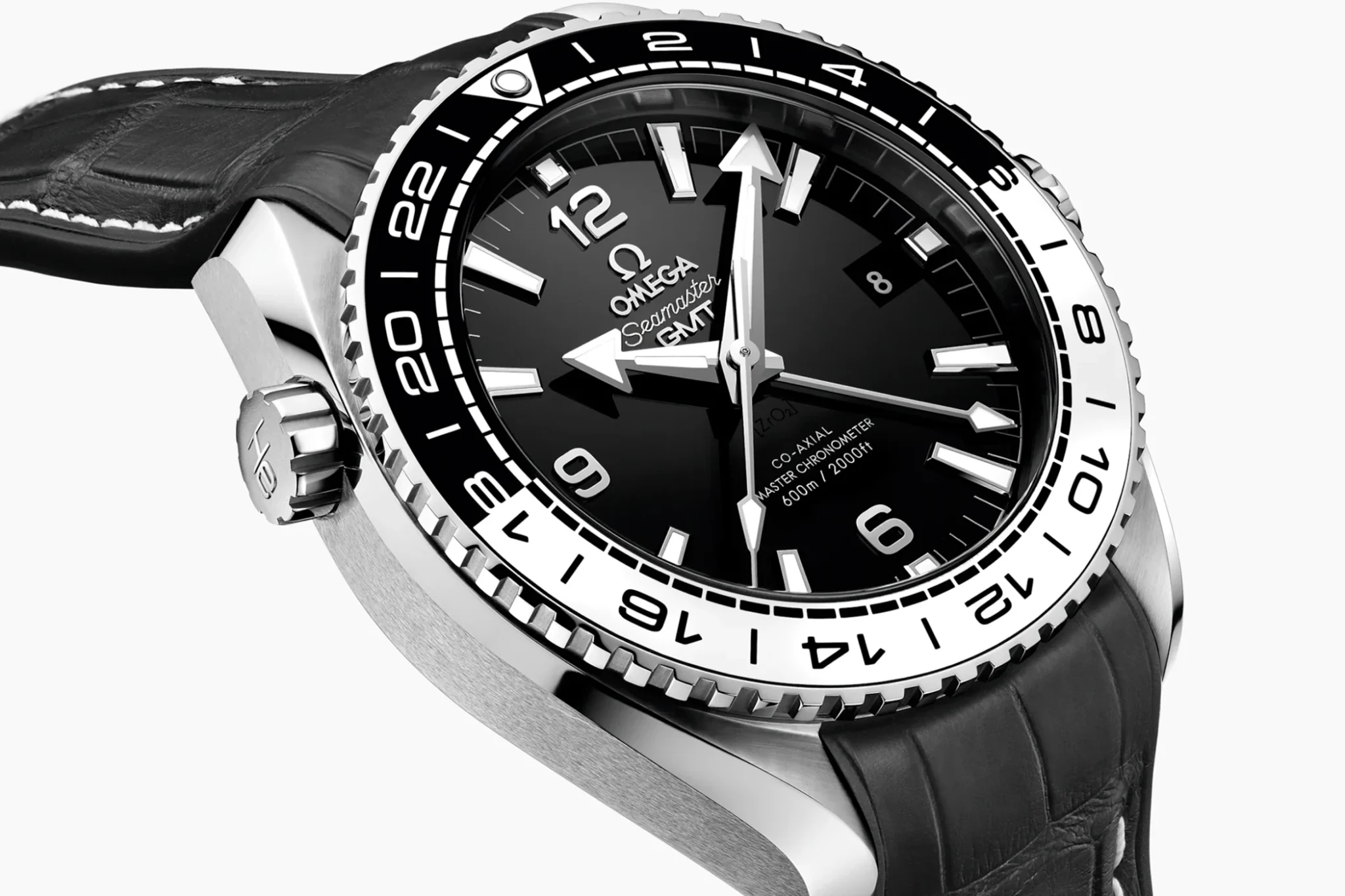
GMT watches guide between €10,000 and €50,000
Rolex GMT Master II – €10.950
The Rolex GMT Master stems from a time when every Rolex innovation seemed to serve a specific purpose: the Submariner was aimed at divers, the Milgauss was a model for scientists, and finally, the GMT Master was a watch for pilots. The Rolex GMT Master is considered to be one of the first watches to popularise the quick reading of a second time zone at a glance. In 1954, the year it was launched, it was developed as a time zone watch for the pilots of the American airline Pan Am, soon achieving international fame. However, there is a small disadvantage to the way this watch works: the GMT hand rotates when the normal hands are adjusted. To remedy this problem, Rolex launched the GMT Master II as a ‘real’ GMT watch in 1982. For the first time, it was possible to adjust a Rolex GMT using a more sophisticated concept: the ‘Traveller’ GMT function makes it possible to adjust the regular hour hand independently of the GMT hand, without having to stop or completely reset the watch.
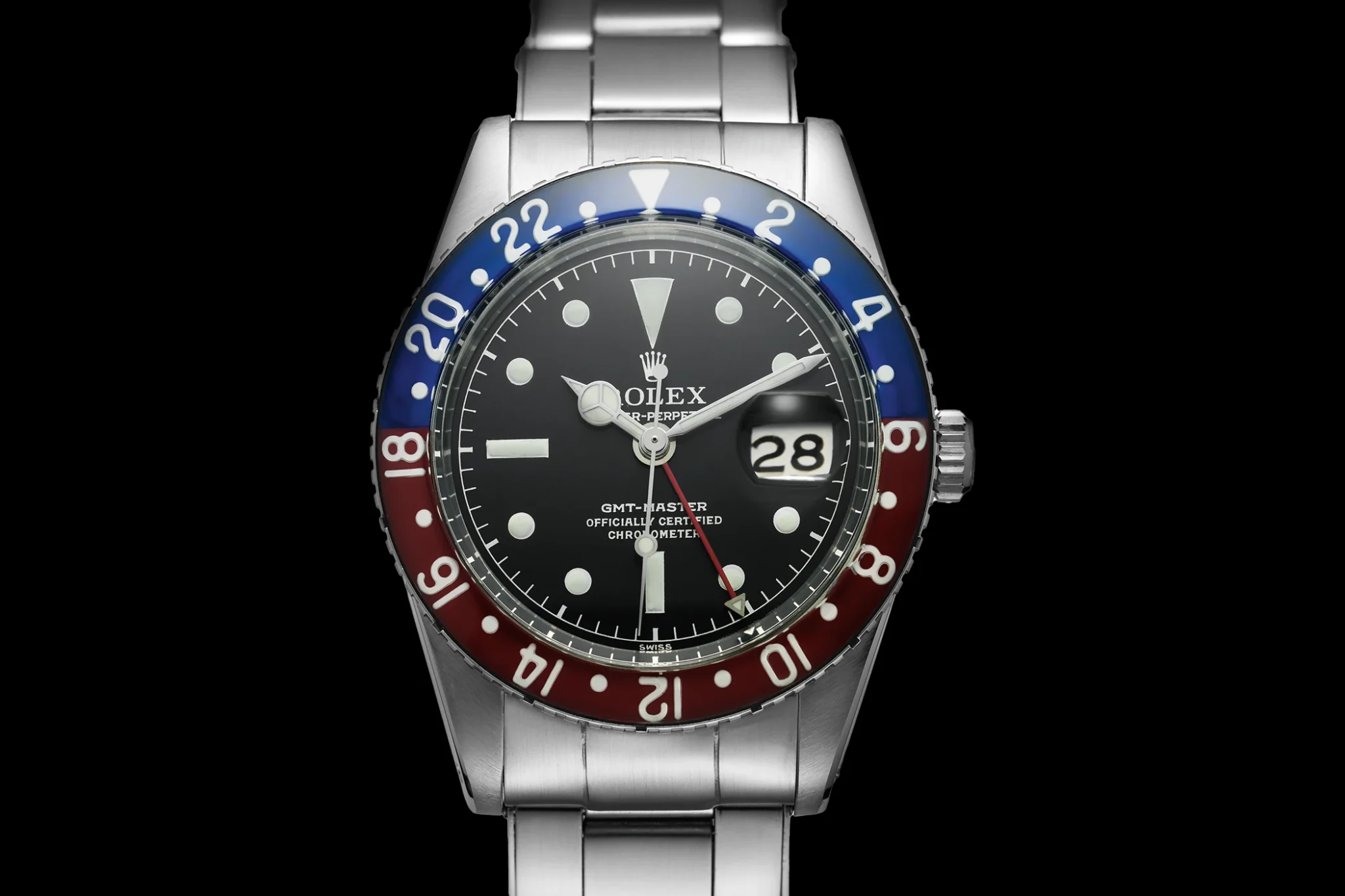
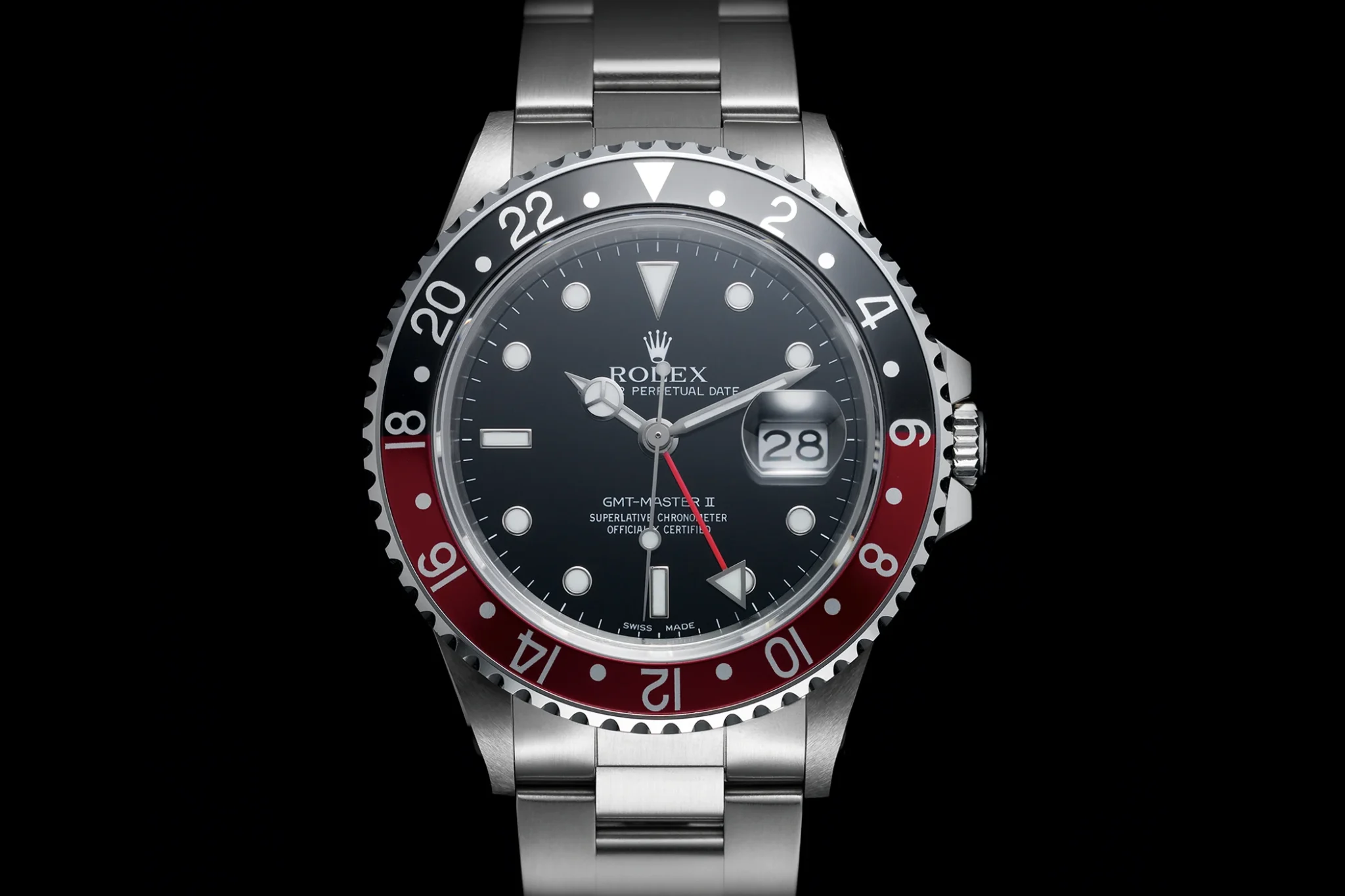
The GMT Master II is also regarded as the watch in which Rolex first trialed many of its emblematic characteristics. Introduced in 2005, the GMT Master II debuted a whole series of elements that we associate with Rolex today: these changes included Rolex’s first ‘Cerachrom’ ceramic bezel, which is not only corrosion-resistant and scratch-proof, but also UV-resistant in colour, as well as the ‘Supercase’, whose case silhouette appeared much more prominent thanks to wider lugs, a wider bezel and a thicker overall profile. A current model that embodies these elements is reference 126710GRNR, which is available for €10,950.
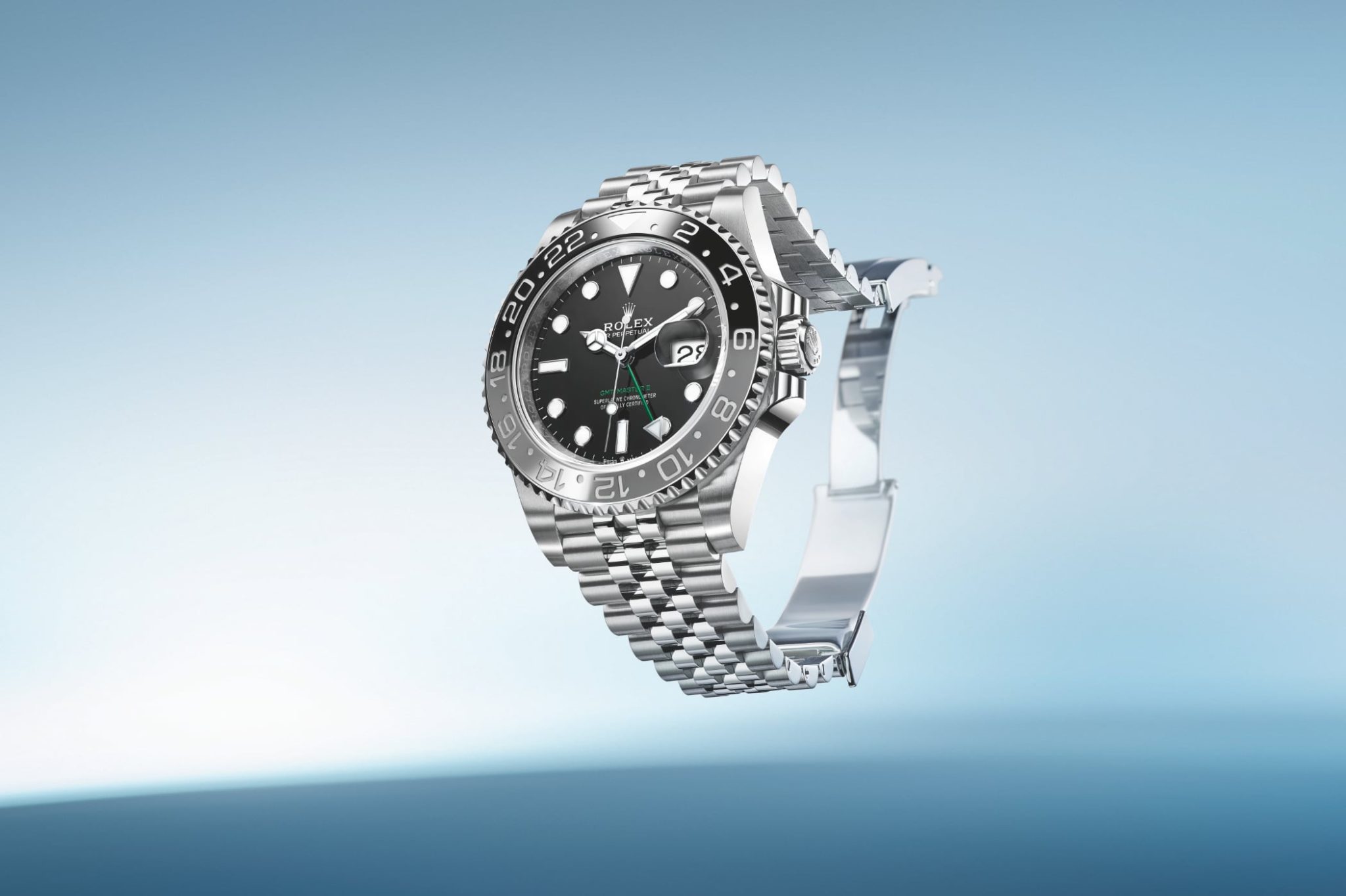
Chopard L.U.C GMT One – €25,100
The Chopard L.U.C GMT One combines refined design with intelligent functionality. Its 42 mm case is crafted from 18-carat rose gold, housing a brown sunburst dial with Arabic numerals and Super-LumiNova-coated indices for clear legibility. The watch features two crowns for easy operation: the crown at 2 o’clock sets the local time (hours and minutes) and date, while the crown at 4 o’clock adjusts the second time zone via a 24-hour disc. The central 24-hour hand is fixed to the main time zone and cannot be adjusted independently. To set the second time zone, the 24-hour disc must be aligned with the GMT hand. Inside, the L.U.C 01.10-L automatic movement offers a power reserve of around 60 hours. The Chopard L.U.C GMT One is available for €25,100.
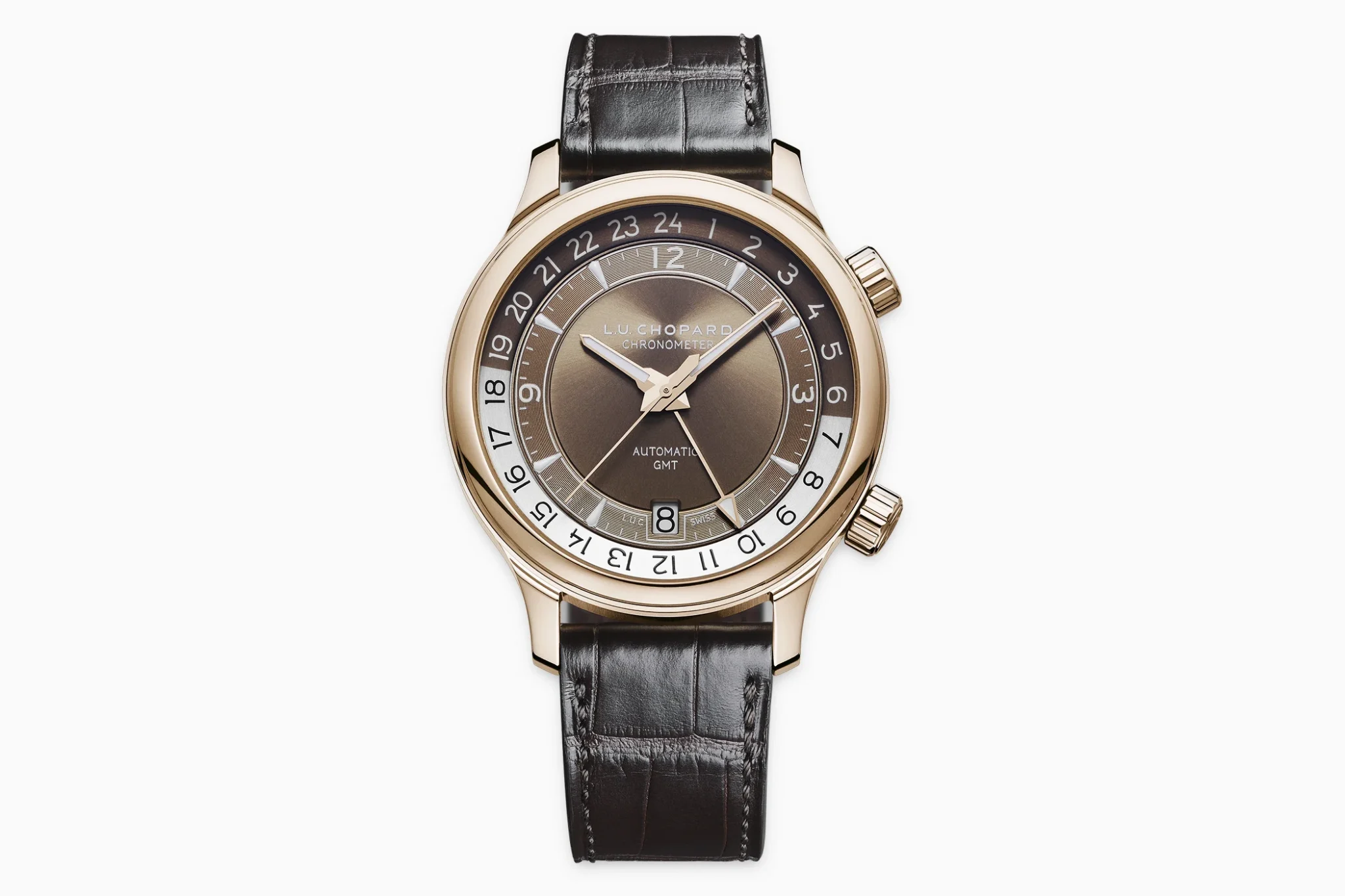
GMT watches guide over €50,000
Greubel Forsey GMT Balancier Convexe – CHF 350,000 excl. VAT
The Greubel Forsey GMT Balancier Convexe takes a unique approach to the GMT complication. At the centre of the dial is a rotating miniature globe that completes one full rotation every 24 hours. Surrounding it are three rings that display local time in hours and minutes. The hours are shown on a satin-finished grey ring, and the minutes on a narrow black ring, both with red, luminescent-tipped hands. The GMT time is displayed on two additional engraved rings. A decentralized display at 10 o’clock uses a blue gold hand to show the second time zone. The caseback features a disc displaying the 24 time zones and corresponding reference cities, replacing the UTC of Paris with La Chaux-de-Fonds, a nod to Greubel Forsey’s Swiss roots. As the most expensive watch in our GMT watches guide, prospective buyers must be prepared to pay CHF 350,000 plus VAT for the Greubel Forsey GMT Balancier Convexe.
